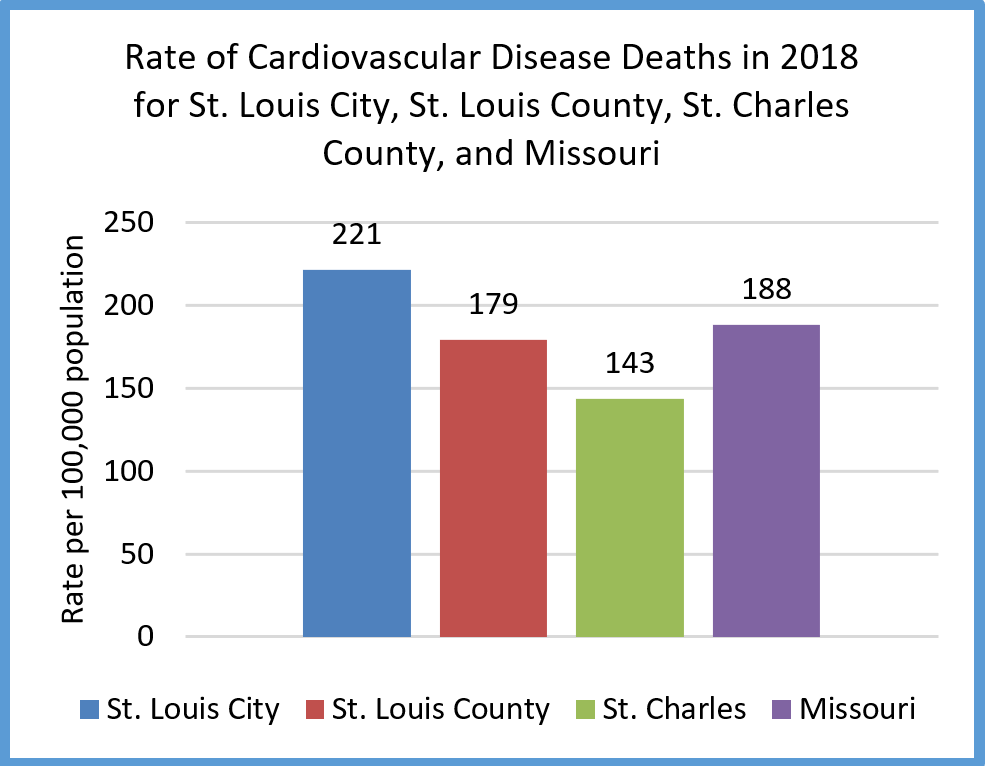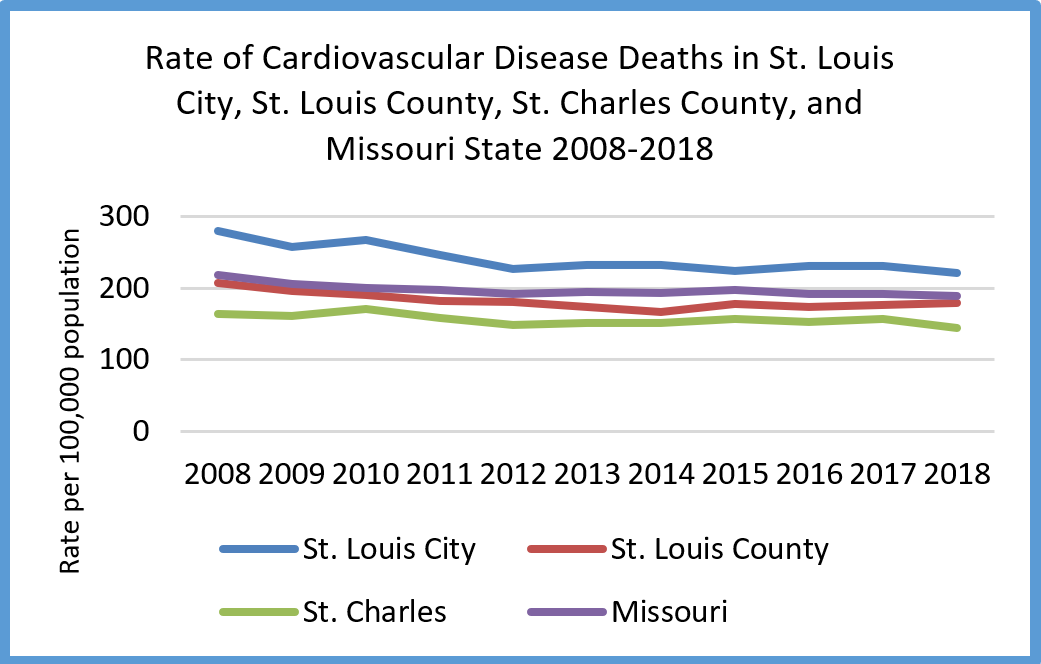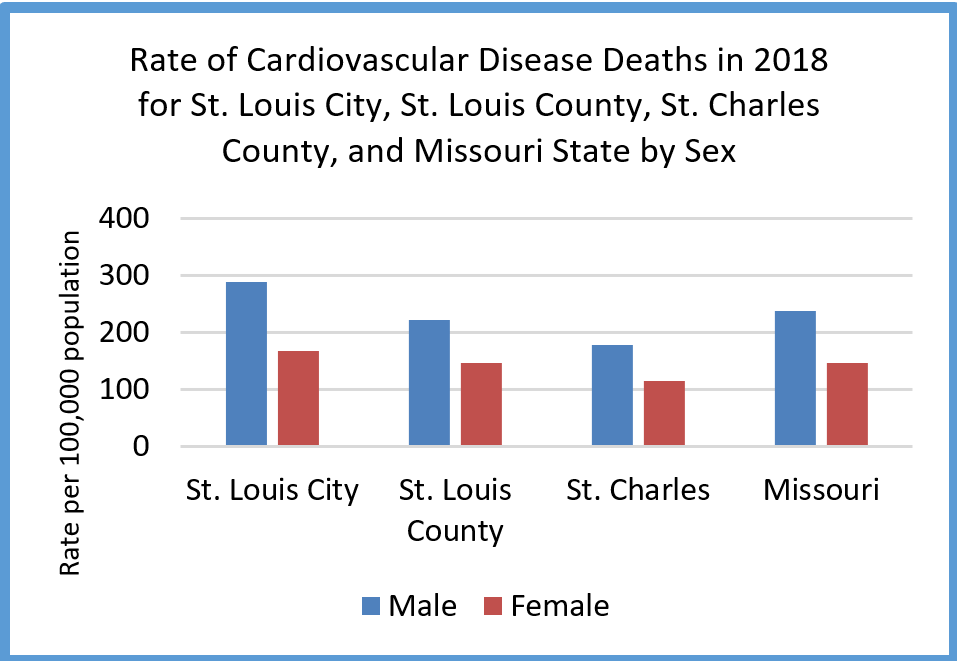Cardiovascular Disease Data Brief (2021)
Cardiovascular disease (CVD) is a group of disorders involving the heart and blood vessels. CVD is the leading cause of health problems in the United States.
This content is also available in the following format:
Cardiovascular Disease Data Brief
Cardiovascular disease (CVD) is a group of disorders involving the heart and blood vessels. CVD is the leading cause of health problems in the United States. In 2019, 48% (121.5 million) of the adult population had at least one CVD condition, and 46% of the population was estimated to have hypertension. (3) One out of every four deaths result from CVD, and about 2 in 10 CVD deaths occur before the age of 65. (1)
Many Americans have risk factors for CVD, which include obesity, physical inactivity, high blood pressure, cigarette smoking, high cholesterol, unhealthy diet, excessive alcohol use, and diabetes. Other factors such as age, race-ethnicity, and gender also put people at a higher risk for CVD. Ninety percent of individuals over the age of 80 have some form of CVD.
The public health impact and economic burden of CVD is enormous. In 2018, it was estimated that CVD costs the U.S. healthcare system $214 billion per year and results in losses in productivity of over $138 billion. (3)


City of St. Louis Surveillance of Cardiovascular Diseases
In 2018, St. Louis City had a CVD death rate of 221 per 100,000 population, which was higher than the rate of St. Louis County with 179 per 100,000, and St. Charles County with 143 per 100,000. The state of Missouri had a CVD death rate of 188 per 100,000. From 2008 to 2018, there was a steadfast decline in CVD death rates across the country and in Missouri. The CVD death rate for the city dropped by 21% since 2008, compared to St. Louis County (13%), St. Charles (12%), and Missouri (14%), yet the burden of the disease remains high in the City of St. Louis. (2) As seen throughout the state and nationally, males suffer from CVD at a greater rate than females. In 2018, males in St. Louis City had a CVD death rate of 289 per 100,000 compared to females with 168 per 100,000. (2) According to the Centers for Disease Control and Prevention (CDC), heart diseases are the leading cause of death for men and are responsible for one in every four male deaths. (1)


Racial disparities exist amongst CVD death rates, disproportionately affecting Blacks/African Americans more than Whites. The CVD death rate in 2018 among Black residents in the City of St. Louis was 265 per 100,000, compared to White residents with 194 per 100,000. (2) The health disparity among racial and ethnic groups is also observed at both state and national levels. The burden of CVD in the City of St. Louis may be ascribed to a high number of residents with unhealthy lifestyle choices, such as inactivity, smoking, and unhealthy diets, which constitute major risks for CVD. Based on 2020 data, 34% of adults in St. Louis City are obese, 25% of adults are smokers, and 26% of residents do not engage in any leisure-time physical activities. Also, the diet quality/food environment index for St. Louis residents is 6.0/10. (4) These health indicators help explain why St. Louis City ranked poorly compared to other counties and the state. Other contributory factors are medical conditions such as diabetes, high blood pressure, and high blood cholesterol, which are also high in St. Louis City. Having one of these medical conditions increases the risk of suffering from CVD.
What Are Health Departments Doing to Reduce Cardiovascular Diseases?
- Promoting the adoption of food service guidelines and nutrition standards, which include developing policies aimed at decreasing sodium consumption.
- Promoting the adoption of physical education and physical activity in schools, early child care centers, and work sites.
- Promoting reporting of blood pressure and self-monitoring of blood pressure.
- Promoting awareness of prediabetes among people at high risk for type 2 diabetes.
- Increasing access to healthy foods and beverages, and supportive nutrition environments.
- Implementing quality improvement processes in health systems.
- Educating the community on nutrition and eating healthy foods, being physically active, and other preventive measure for reducing risk factors for cardiovascular diseases.
- Reducing smoking hazards through educational campaigns, promoting policies for smoke-free environments, smoking cessation classes, and enforcing local tobacco-related ordinances.
- Connecting people to resources for medical assistance and for help with reducing risk factors for CVD.
Sources
- Centers for Disease Control and Prevention (www.cdc.gov)
- Missouri Information for Community Assessment (https://healthapps.dhss.mo.gov/MoPhims/MICAHome)
- American Heart Association/American Stroke Association (https://www.heart.org/)
- County Health Rankings and Roadmaps (www.countyhealthrankings.org)